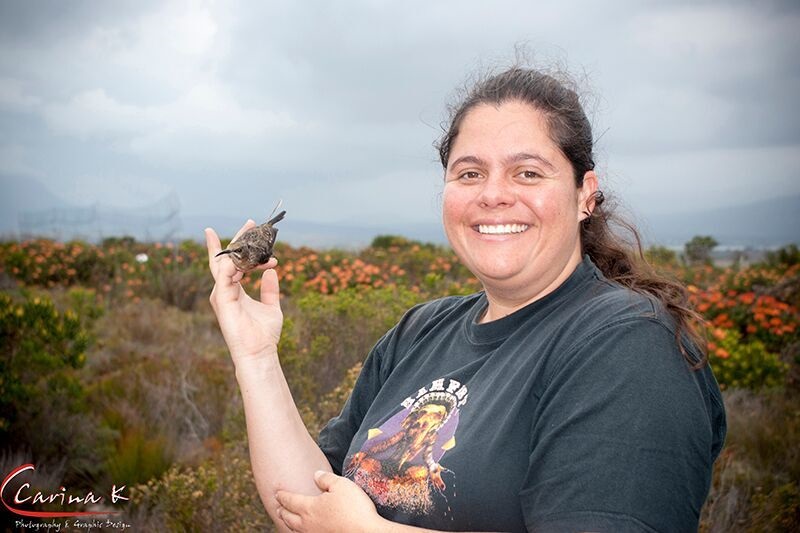Mites living in Protea plant communities in the Cape Floristic Region have found a clever way to thrive, a new study at Stellenbosch University (SU) found.
“Certain mites are able to survive and thrive by hitching a ride on birds to travel between Proteas where they feed on fungi, pollen and nectar," says Dr Natalie Theron-De Bruin who recently obtained her doctorate in Conservation Ecology at SU. Theron-De Bruin currently lives in Melbourne, Australia.
She says her research has provided evidence of a unique and interesting relationship between mites, fungi, birds and Proteas.
As part of her doctoral study, Theron-De Bruin investigated the mutual relationship between mites and fungi and how they move from flower to flower. She also looked at the possible role of mites in Protea pollination. She collected over 32000 mites from flowers, fruits, soils and sugarbirds in areas such as Stellenbosch, Franschoek, Kleinmond and Gansbaai.
“My study was the first to show that Cape sugarbirds carry around a group of Protea-associated flower mites (Proctolaelaps vandenbergi) which accumulate in their thousands at the top of open flowers where they wait for pollinators to disperse them."
“Smaller mites (Glycyphagus and Tarsonemus) climb onto the lower backs of the much larger Proctolaelaps mite who then in turn climbs on the beak of the Cape sugar bird to move from flower to flower."
“Here the Proctolaelaps mites climb off with their smaller partners which will then inoculate these new flowers with their mutualistic fungal partners Sporothrix which they use as food. As the bird inserts its beak into the flower to reach for nectar, the mites climb onto the beak and breast area of the bird and are dispersed to the next suitable host."
Theron-De Bruin says in this way the smaller mites also ensure that they and their primary food source, gets dispersed over a wide area. This Sporothrix fungi is found in the flowers and seedheads of Protea trees in Africa.
“What is quite interesting is that these flower mites are pollen and nectar thieves with the abundant Proctolaelaps mites consuming staggering amounts of pollen without contributing to the pollination of the flowers," says Theron-De Bruin.
She adds that the reproduction of the Proctolaelaps mite is strongly linked to pollen availability.
According to Theron-De Bruin, the pollen consumption rates of these mites can significantly reduce available pollen in Proteas.
“We can confirm that this influences the pollen loads available for pollination, but the extent of this influence is still unclear."
While it may look as if mites are just freeloaders, they do help to break down debris in the soil surrounding Protea plants, says Theron-De Bruin.
She mentions that her study also demonstrated that current pest management strategies used in the cultivation of Proteas do not effectively control mites.
“The reason why it might not be working is because mites can move across natural and cultivated populations via insects and birds. The cultivated systems are not closed therefore mites can be re-introduced into the system after chemicals have been used."
Theron-De Bruin says there is a need for continued improvement of postharvest pest management practices.
- Main photo: Small mytes on proteas.
- Photo 1: Dr Natalie Theron-De Bruin with a sugarbird.
FOR MEDIA ENQUIRIES ONLY
Dr Natalie Theron-De Bruin
Melbourne, Australia
Tel: +61482013535
E-mail: natz.83.nt@gmail.com
ISSUED BY
Martin Viljoen
Manager: Media
Corporate Communication
Stellenbosch University
Tel: 021 808 4921
E-mail: viljoenm@sun.ac.za

